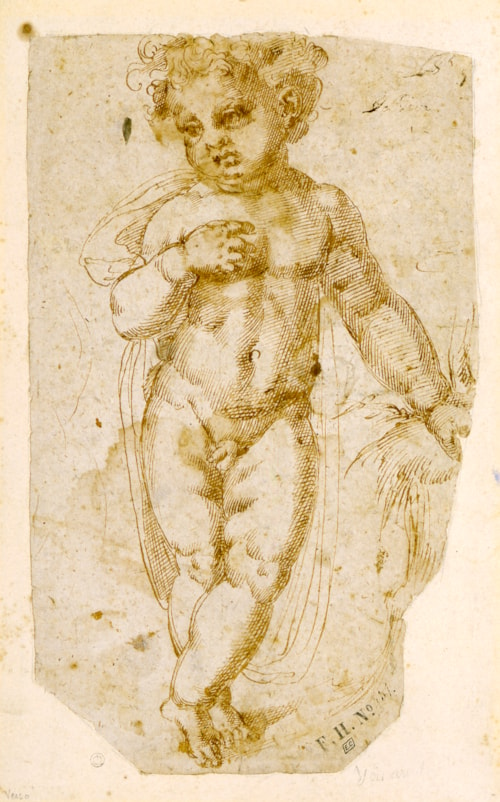
Baccio BANDINELLI
Florence 1493 - Florence 1560
Biography
One of the leading sculptors of the Cinquecento in Italy, Baccio Bandinelli was profoundly influenced by the work of Michelangelo, a lifelong rival whose fame he sought to emulate throughout his career. Although he received several important Roman commissions, he worked in Florence for much of his life, where he enjoyed the patronage of the Medici. There his major public sculptural commissions included a statue of Saint Peter for the facade of the Duomo, the Hercules and Cacus for the Piazza della Signoria and the monument to Giovanni delle Bande Nere outside the church of San Lorenzo. He also sculpted a figure of Orpheus for the courtyard of the Palazzo Medici, as well as sculptures for the Sala dei Cinquecento in the Palazzo Vecchio and the high altar of the Duomo. Bandinelli also worked occasionally as a painter, notably receiving a commission from Pope Clement VII for two frescoes for the Florentine church of San Lorenzo, though the project was eventually abandoned. In Rome, he designed and executed the tombs of the Medici popes Leo X and Clement VII. In 1546 he began work on an elaborate marble choir screen, ornamented by statues and reliefs, for the Duomo in Florence; an immense project that occupied him, on and off, for the remainder of his career. Like every sculptor of his age, however, Bandinelli remained in the lifelong shadow of Michelangelo, whose mastery of technique he was never quite able to equal.
Bandinelli’s contemporary fame was based as much on his drawings as on his sculpture, and Vasari notes of him that he was ‘allora disegnatore molto stimato’. He was a prolific draughtsman, and more studies by him survive than by any other 16th century sculptor save Michelangelo. (He is also known to have made drawn copies after the work of such earlier sculptors and painters as Giotto, Masaccio, Desiderio da Settignano, Donatello, Fra Bartolomeo and Leonardo, as well as Michelangelo.) Indeed, drawing was the foundation of Bandinelli’s art, as was noted in the Memoriale – long thought to be the artist’s autobiography but recently identified as having been composed by his grandson – where he is claimed to have stated that ‘All my concentration was fixed on drawings...it is above all in that activity that I have prevailed.’ Certainly, the artist valued his drawings highly, and he seems not to have parted with many of them, further insisting that his heirs retain them after his death; ‘the drawings, of which I leave behind almost a full cassone, should be guarded like so many jewels; do not let them slip through your fingers, for there will come a time when they will be regarded as treasures.’
That Bandinelli’s drawings continued to be admired by collectors long after the artist’s death is seen in Pierre-Jean Mariette’s comments in the 1741 sale catalogue of drawings from the Crozat collection; ‘Baccio's style of drawing is very skillful, as one would expect from a master who had a profound knowledge of the structure of the human body and all its movements; but this style is also overly austere, even savage... I prefer the drawings this master made in pen to those he executed in red chalk; they appear less resolute, but they are closer to the truth.’ Some five hundred drawings by Bandinelli are known today, the majority of which are in pen and ink, although some are in black or red chalk.


